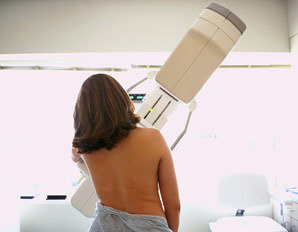by
Brendon Nafziger, DOTmed News Associate Editor | August 01, 2011
Deaths from breast cancer are plummeting across the developed world, and according to a controversial new study, breast cancer screening has little to do with it.
The results, published Thursday in the British Medical Journal, represent another round in the long-running debate over the merits of mammography, and come only a week after major medical societies re-confirmed that women should start getting mammograms at age 40.



Ad Statistics
Times Displayed: 2647
Times Visited: 16 Fast-moving cardiac structures have a big impact on imaging. Fujifilm’s SCENARIA View premium performance CT brings solutions to address motion in Coronary CTA while delivering unique dose saving and workflow increasing benefits.
"Our study adds further population data to the evidence ...that mammography screening by itself has little detectable impact on mortality due to breast cancer," write the authors, led by Philippe Autier, research director of the International Prevention Research Institute in Lyon, France.
The researchers behind the population-based study, which drew from a World Health Organization mortality database, said advances in treatment or better efficiencies in health care management are "more plausible explanations" for the decline in breast cancer deaths in western Europe and North America over the past 20 years.
However, radiology groups have criticized the study, saying it has "little bearing on, or resemblance to, screening in the United States."
Early adopters
In the study, the researchers took their guidance from the history of cervical cancer screening programs.
It's known that countries that adopted such programs early on had quicker drops in mortality from the cancer. For instance, in Finland, which adopted the screening programs in the 1960s, cervical cancer deaths fell 50 percent between 1970 and 1980. In Norway, which adopted the screenings 15 years later, deaths fell only 8 percent in that period.
The researchers wanted to see if a similar dynamic was at play for mammography screenings, so they compared three similar countries, where one country adopted a nationwide screening mammography program 10-15 years earlier than the other: Norway and Sweden, the Netherlands and Belgium (including Flanders, the Dutch-speaking region in the north), and Northern Ireland and the Republic of Ireland. And the researchers said, after crunching the numbers, there wasn't a big difference between the two.
For instance, Northern Ireland started a nationwide, organized program in the 1990s, and the Republic of Ireland only got it off the ground in 2000. But from 1989 to 2006, breast cancer deaths fell 29.6 percent in Northern Ireland and 26.7 percent in Ireland, according to the researchers.
It was similar for the other country pairs.
Sweden began its mammography program in 1986, and achieved nationwide coverage by 1997. Norway began its screening program 1996 as a pilot project, and by 2005 it reached nationwide coverage. Yet from 1989 to 2006, breast cancer deaths in Sweden fell 16 percent and in Norway, 24.1 percent.

